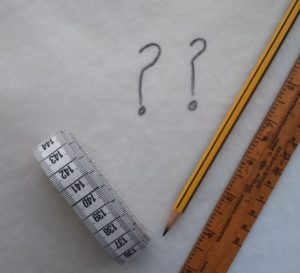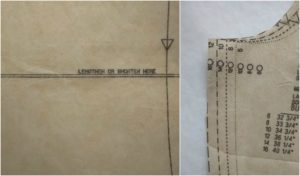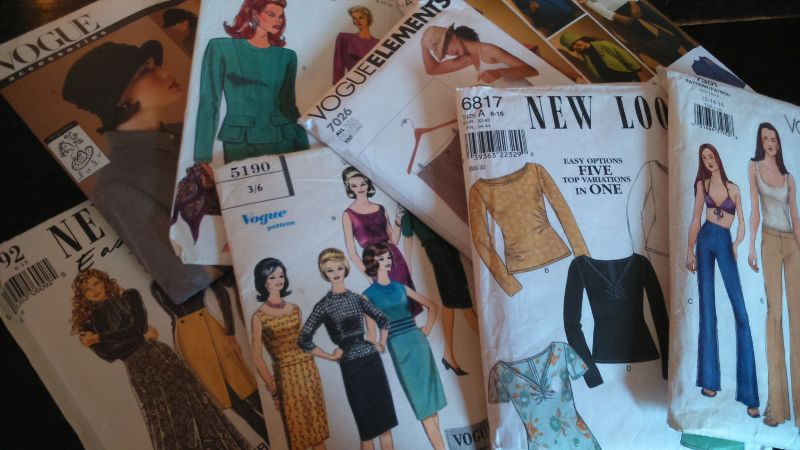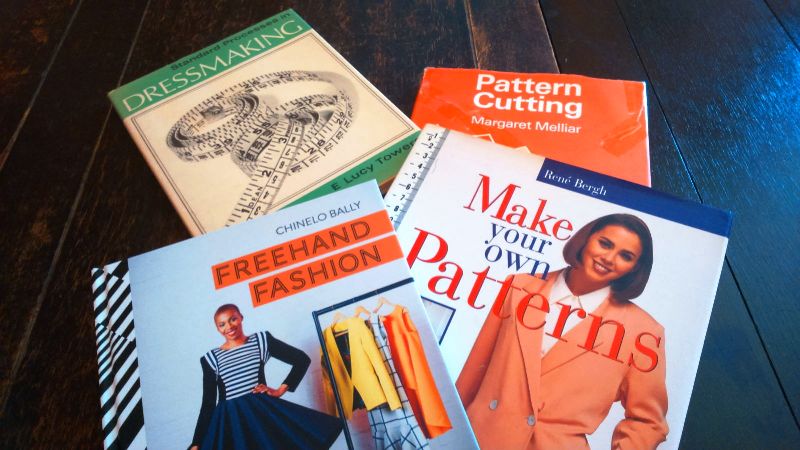Have you wondered if it might be worthwhile to draw up (or draft) your own sewing patterns? Whilst shop bought sewing patterns have a lot of flexibility built in, to allow you to fit to your height and shape, there are reasons why you might want to DIY your own. This post is less about the ‘how’, and more about the ‘why’. Not only in practical terms, but less tangible ways too.
Is it difficult, particularly for a beginner sewist? I think not, especially if you start simple. Isn’t that the case with everything? After all, Chinelo Bally, runner up in the The Great British Sewing Bee 2014, had never used a commercial sewing pattern, and hadn’t been making her own clothes for long when she joined the show. She used a ‘freehand sewing’ technique (meaning pattern drafting directly on to fabric), and stole the show with her designs.
Why Make Your Own Sewing Patterns?
Could pattern drafting be for you? That depends on you and how you like to work, but here are five circumstances that might sway you:
- If your not so standard height and figure have you making repeat adjustments to each new shop-bought sewing pattern. Some of us swiftly make the odd adjustment here and there, some of us need to make more….
- When you can’t find what you’re looking for in the pattern books. Perhaps you have an eclectic taste, or a liking for a varied range of vintage style?
- If you want to cut the cost of each sewing project
- If you want to be the creator from start to finish, to be self-sufficient and freed from ‘buying a style’ or ‘buying the fit’
- When curiosity reigns (getting back to first principles appeals)
Economy of Time in Pattern Drafting

Pattern drafting doesn’t mean getting your paper, pens, ruler and measuring tape out, and starting from scratch each time. You don’t need to start with a blank piece of paper (or fabric) for each new design. Neither do you need to stare into space, waiting for inspiration, when you have building blocks as a foundation. That would be frustrating, and if that were the case, I wouldn’t blame you for turning away right now.
By taking some detailed body measurements and creating basic patterns for a straight skirt, a close fitting, round-neck bodice and straight-leg, close fitting trousers to fit you exactly, you have your basic patterns. These are called ‘blocks’ or ‘slopers’.
Start With Blocks
They incorporate all your idiosyncrasies, wrapped up and revealed by your body measurements. From there, all manner of styles can materialise. To make a new pattern, all you need to do is make a few changes to the original block pattern. An extra couple of darts here, a cut and splaying of the pattern there, an additional seam, an additional pocket. The world is your oyster.
It occurred to me, some time ago, that it would be worth trying. I’d spent time cutting out pattern pieces, shortening at several points to fit the 4′ 11′ me, and adjusting for a less than standard figure. How many of us fit what is accepted as a normal figure?

I bought Make your own patterns by Rene Burgh several years ago, and whilst flicking through, realised that if I made the basic body blocks to my height, all other designs resulting from these would have my just-shy-of-5′ figure built in.
I’ve always had less waist definition than most shop-bought clothes or sewing patterns allow for. I’ve other fitting issues to deal with too. You probably have your own versions of ‘wonkiness’. But, you could account for these, once, in making your building blocks, then concentrate on changing the design. That’s the fun part!

There’s plenty of choice in sewing patterns to buy, but you can still find yourself stuck looking for a particular shape and style, despite the choice. You can bamboozled yourself with so many options.
There’s something about going back to basic building blocks to focus the mind. You might decide to take the basic bodice and widen the neckline. Then, next time you could add a round, flat collar, or convert from darts to princess seams, with little pocket flaps at the hips. You’re taking yourself on a journey – there’s progression.

I like the self-sufficiency involved – this is resourceful sewing. If I’m looking for something new to make, and the shops are closed, I could draft up a new pattern before the shops open again, or an online-bought pattern drops through the letter box. And, I won’t have touched my bank account.
That said, it’s also curiosity that draws me in. If I’m making clothes from a pattern, I wonder how someone designed it, and how we managed before commercial sewing patterns appeared? It takes me down a rabbit hole into many questions about process. It’s a feeling too, that these skills can be a very useful part of a self-reliant, self-sufficient lifestyle.
My choice, at the moment, is between standard pattern drafting on to paper (brown paper or baking paper), to make paper patterns, or directly on to fabric, following my recent purchase of Chinelo Bally’s Freehand Fashion: Learnt to sew the perfect wardrobe – no patterns required!.
Learning how to draft your own patterns doesn’t have to mean never buying a sewing pattern again. But, when if comes to pattern drafting, if you’re unsure which method to use, read my post on Freehand Pattern Drafting Versus Standard Pattern Drafting.


I usually draw my own sewing patterns because that way I use my measures and I don't have to adjust patterns. The thing is that I started sewing two years ago and I still attend lessons, so I have my teacher's help which makes things easier. Irune
Hi, it's a good reason for drafting your own, and lucky that you have the help of a teacher – good luck with learning new designs.
I don't think many people fit standard sizes well. They are just built on average lengths and widths, but lots of people don't know that and blame their bodies instead. I think making your own patterns is a great idea!
That's true, you could mistakenly think you're just about the only person that doesn't fit the standard measurements – definitely not true! To add to the first comment (is it Irune?), I started sewing years ago as a teenager, using conventional sewing patterns, so pattern drafting for me is a new venture. I wonder if pattern drafting is more instinctive if you start out drafting your own patterns when you first learn to sew. Has anyone started out from the beginning making their own patterns? I'd love to hear comments.